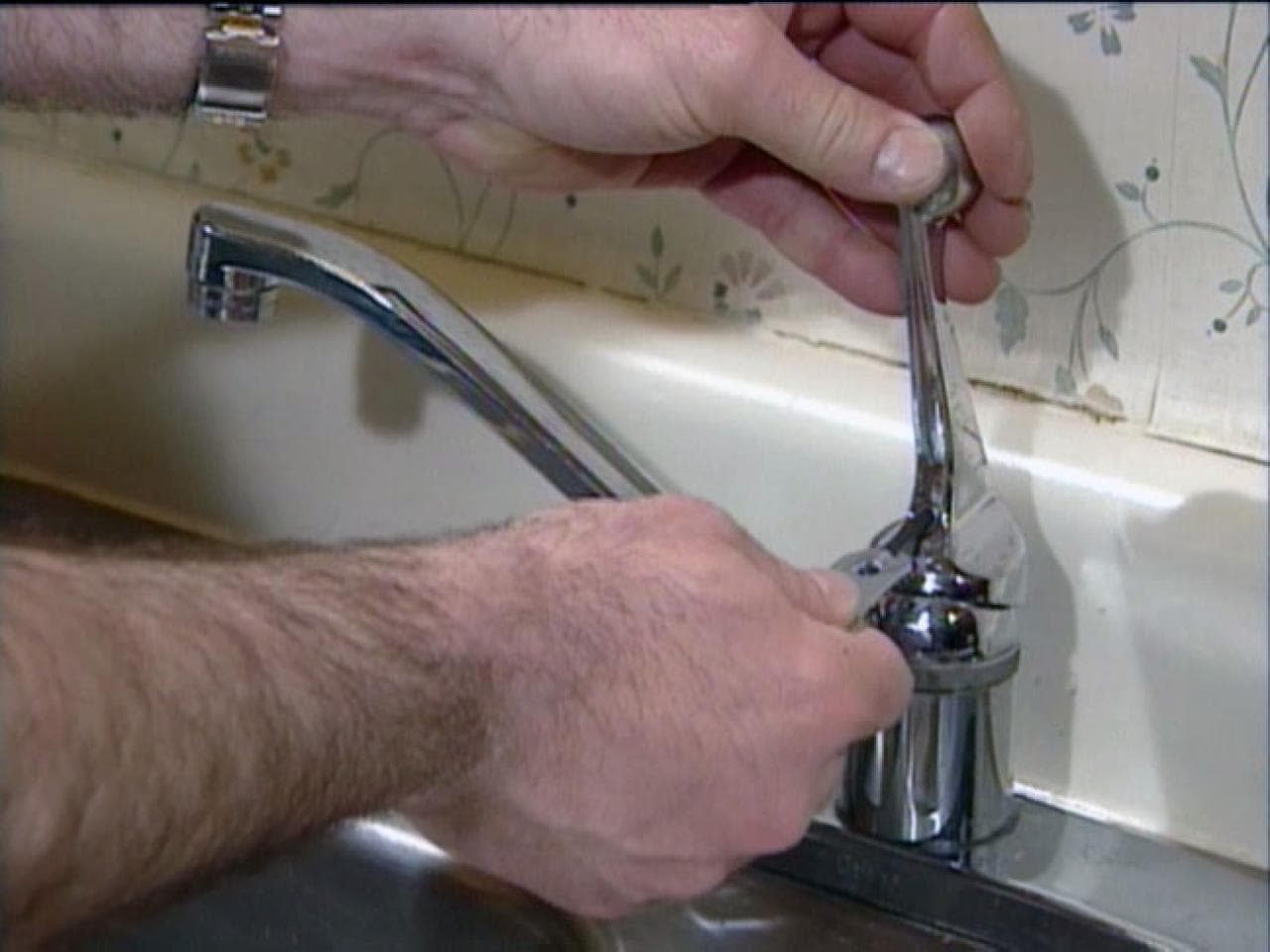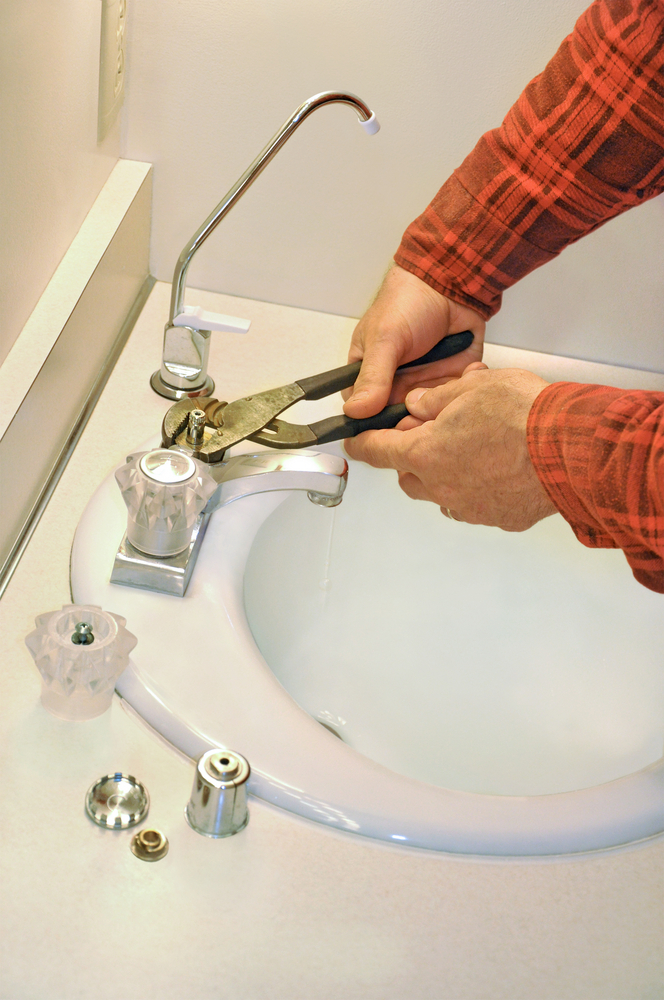Learning the Significance of Fixing a Leaking Faucet
Learning the Significance of Fixing a Leaking Faucet
Blog Article
What're your beliefs about Should I Repair or Replace a Leaky Faucet??

Trickling faucets may appear like a small trouble, yet their impact goes beyond just the annoyance of the noise. From wasting water to incurring unnecessary economic costs and health and wellness dangers, overlooking a dripping tap can lead to numerous effects. In this short article, we'll look into why it's essential to address this common family concern immediately and effectively.
Wastage of Water
Ecological Impact
Leaking faucets contribute significantly to water wastefulness. According to the Environmental Protection Agency (EPA), a solitary faucet leaking at one drip per secondly can throw away more than 3,000 gallons of water each year. This not only strains water resources yet also impacts ecosystems and wild animals dependent on them.
Financial Expenses
Raised Water Bills
Beyond the environmental influence, trickling taps can pump up water costs considerably. The collected waste in time translates right into higher utility expenditures, which could have been prevented with timely repair services.
Prospective Property Damage
Furthermore, prolonged leaking can result in harm to fixtures and surfaces bordering the tap. Water buildup can cause staining, deterioration, and also structural issues if left ignored, causing extra repair service prices.
Wellness Issues
Mold And Mildew and Mold Development
The continuous presence of dampness from a dripping faucet develops a suitable environment for mold and mildew and mold development. These fungis not only compromise indoor air top quality however likewise position wellness dangers, particularly for people with breathing conditions or allergic reactions.
Waterborne Illness
Stationary water in dripping taps can end up being a breeding ground for microorganisms and other pathogens, enhancing the threat of waterborne conditions. Impurities such as Legionella bacteria grow in stagnant water, possibly bring about serious illnesses when consumed or breathed in.
DIY vs. Professional Fixing
Benefits and drawbacks of DIY Repair
While some may attempt to deal with a dripping tap themselves, do it yourself repair work come with their very own collection of challenges. Without appropriate expertise and devices, do it yourself attempts can exacerbate the problem or cause incomplete fixings, lengthening the trouble.
Advantages of Employing an Expert Plumber
Hiring a professional plumber guarantees that the underlying cause of the leaking tap is attended to effectively. Plumbing professionals possess the knowledge and equipment to diagnose and fix tap issues effectively, conserving time and decreasing the risk of further damage.
Step-by-Step Overview to Taking Care Of a Dripping Tap
Devices Required
Prior to attempting to take care of a trickling tap, gather the needed devices, including a flexible wrench, screwdrivers, substitute parts (such as washers or cartridges), and plumber's tape.
Typical Faucet Issues and Their Solutions
Determine the sort of faucet and the details concern causing the drip. Usual issues consist of worn-out washers, rusty shutoff seats, or defective O-rings. Refer to producer instructions or on the internet tutorials for step-by-step support on fixings.
Preventive Measures
Regular Maintenance Tips
To avoid trickling taps, carry out routine maintenance such as cleaning up aerators, evaluating for leaks, and changing worn-out parts without delay. Additionally, take into consideration installing water-saving tools or updating to much more efficient components.
Relevance of Prompt Services
Attending to dripping faucets as quickly as they're noticed stops further water wastage and possible damage, eventually conserving both water and cash in the long run.
Effect On Residential Property Worth
Perception of Well-Maintained Building
Preserving a property in good condition, including attending to upkeep problems like leaking taps, improves its perceived value and value among prospective buyers or renters.
Impact on Resale Worth
Characteristics with well-maintained plumbing fixtures, consisting of taps, command greater resale worths in the property market. Addressing dripping faucets can add to a positive impact during building examinations and settlements.
Environmental Duty
Specific Payment to Conservation
Taking obligation for dealing with leaking faucets lines up with more comprehensive initiatives toward water preservation and environmental sustainability. Every person's activities collectively make a considerable effect on protecting valuable sources.
Sustainable Living Practices
By focusing on prompt repair services and adopting water-saving practices, people contribute to lasting living practices that benefit both present and future generations.
Conclusion
Dealing with a trickling tap goes beyond simple comfort; it's a necessary step toward conserving water, decreasing economic prices, and protecting wellness and residential property. Whether via DIY repairs or professional aid, doing something about it to fix trickling faucets is a tiny yet impactful means to advertise accountable stewardship of resources and contribute to a much healthier, a lot more lasting future.
How to Fix a Dripping or Leaky Faucet
A leaking faucet is one of the most common problems that homeowners encounter, but it being commonplace doesn’t make it any less annoying. The constant drip drip drip of a leaking bathtub faucet, showerhead, or sink tap can disturb your home’s serenity. Left neglected, a dripping faucet can also result in higher water bills and discoloration or mold growth in your sink or plumbing fixtures.
Fortunately, you don’t have to be a trained plumber to know how to stop a dripping faucet. With some basic tools, replacement parts, and a little patience, leaky faucet repair is a breeze. In this article, we’ll explain what causes dripping faucets and how you can fix them.
What Causes a Leaking Faucet?
Kitchen and bathroom faucets come in all manner of designs, but most involve some combination of valves, O-rings, seals, and washers. The O-ring is usually the weakest link, but any one of these pieces can wear down over time. Heat, moisture, temperature fluctuations, minerals, mold, and movement can contribute to warping and corrosion, breaking the watertight seal. This just comes with the territory of being a homeowner. Everything is always subject to wear and tear, and some component parts of your appliances and fixtures need to be replaced on occasion. At least replacement O-rings are cheap!
More rarely, dripping faucets can be a symptom of excessively high water pressure. Were this the case in your home, you would probably notice that the leak is not isolated to one faucet. Water pressure issues are harder to resolve on your own. We recommend contacting a professional plumber if you suspect your water pressure is too high.
How to Fix a Dripping Faucet
Pipe wrench or monkey wrench Allen wrench set Screwdrivers Old towel or rag Shut off the water.
Before you do anything, you need to turn off the water to keep from drenching your kitchen or bathroom. You should find a valve under the sink and against the wall. Once you’ve turned this valve, try turning the faucet on to confirm that the water source has been cut off.
If you can’t locate your local valve for the faucet you’re working on, you can always shut off the water to the house at the main valve. Of course, this will prohibit anyone from using the sinks, showers, or toilets while you’re working on the faucet that’s giving you trouble.
Plug or block the drain.
You’ll be disassembling the faucet and removing some small bits of hardware. Plug the drain with a stopper or rag to avoid the possibility of a small screw falling into your P-trap.
Take apart the faucet assembly.
There are several varieties of kitchen and bathroom faucets, each with its own manner of assembly. For detailed instructions on how to disassemble your faucet, you can refer to the fixture’s manual or contact the manufacturer. If you know whether you have a ball, disc, cartridge, or compression faucet, you can find detailed schematics online.
In general, you need to begin by removing the faucet handles. You might notice a small screw that you’ll need to remove with a screwdriver or Allen wrench. If you don’t see any visible securing hardware, it’s likely hidden under a decorative cap that can be unscrewed or popped off with flathead screwdriver.
Remove each piece methodically, consulting a schematic when necessary. Take notes or arrange the pieces in such a way to make it easier to correctly reassemble the faucet later.
Remove the cartridge.
Once you’ve removed the handles and securing hardware, you should be able to remove the valve cartridge or stem. Some cartridges will slide right out. Other faucet models will require you to loosen a nut with a pipe wrench before you can remove the valve stem.
Examine the exposed hardware.
With the cartridge or stem removed, inspect the component parts. Check the rubber O-rings for wear and tear. Also examine the seat washer for corrosion or other damage. These pieces are usually the responsible parties for a dripping faucet, but it’s worth inspecting the other component parts while you have the faucet disassembled.
Find replacement parts.
Once you’ve identified which faucet component has failed, find an identical replacement. Your local hardware store should have O-rings, seat washers, and other standard components in stock. If you have a luxury or uncommon faucet, you may have to contact the manufacturer for a replacement part.
It’s a good idea to take your old parts with you to the hardware store so you can compare them with the store’s inventory and be sure you’re purchasing the correct replacement.
Reassemble the faucet.
With your new parts in hand, reconstruct the faucet and handles. Don’t be tempted to overtighten screws or nuts. You might think this could create a better seal, but it can instead damage or bend a delicate part of the assembly and create a new problem for you.
Turn on the water and test the faucet.
The only thing left to do is test your work. Unplug the sink, turn the water back on, and try the faucet. Congratulate yourself on a job well done!
https://www.libertyhomeguard.com/how-to-fix-a-dripping-or-leaky-faucet/

Do you really like reading up on Water Dripping from Faucet: Why and How to Fix? Post a remark below. We would be pleased to find out your suggestions about this review. In hopes that you come back again in the future. Loved our content? Please quickly share it. Let someone else find it. I recognize the value of your readership.
Report this page